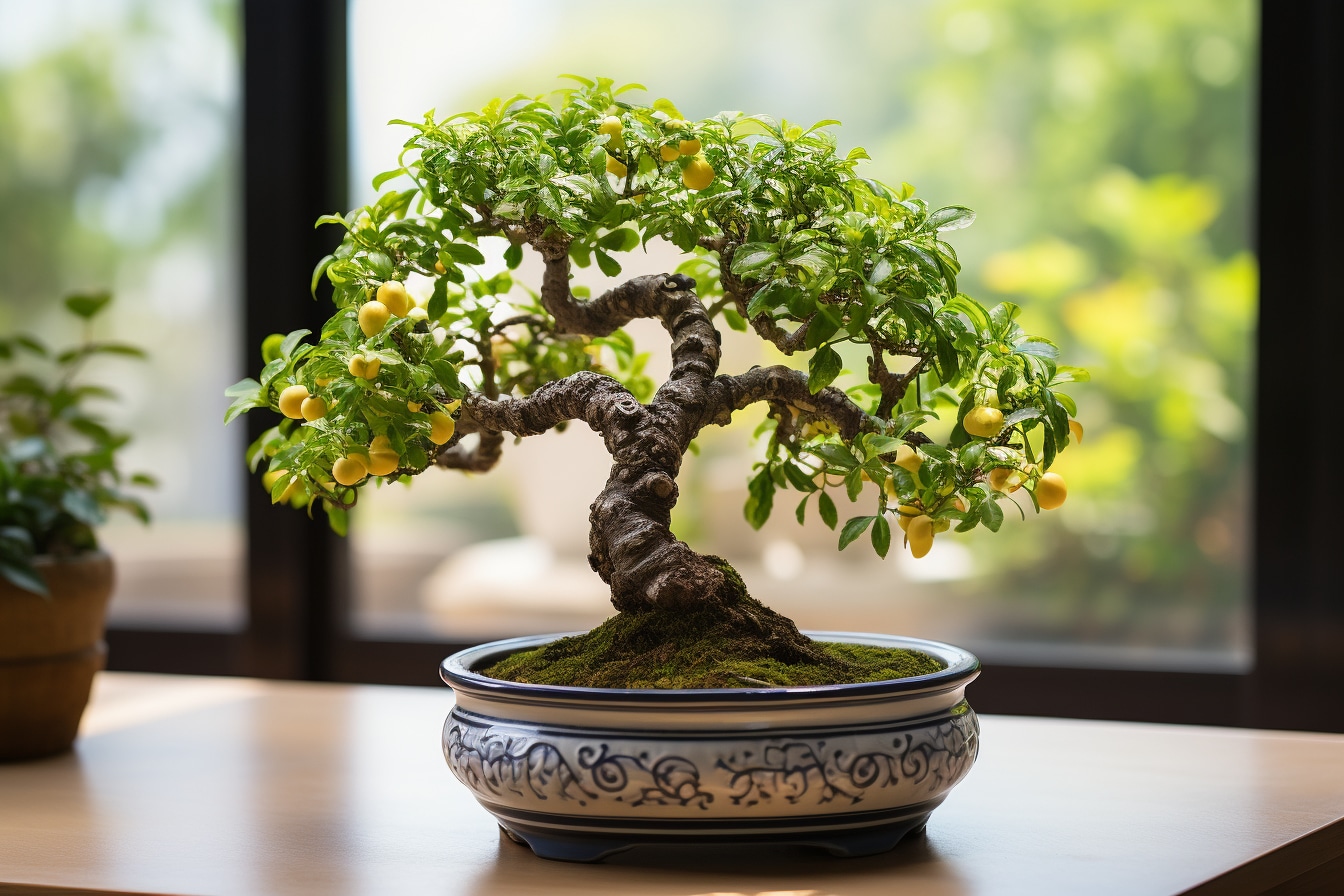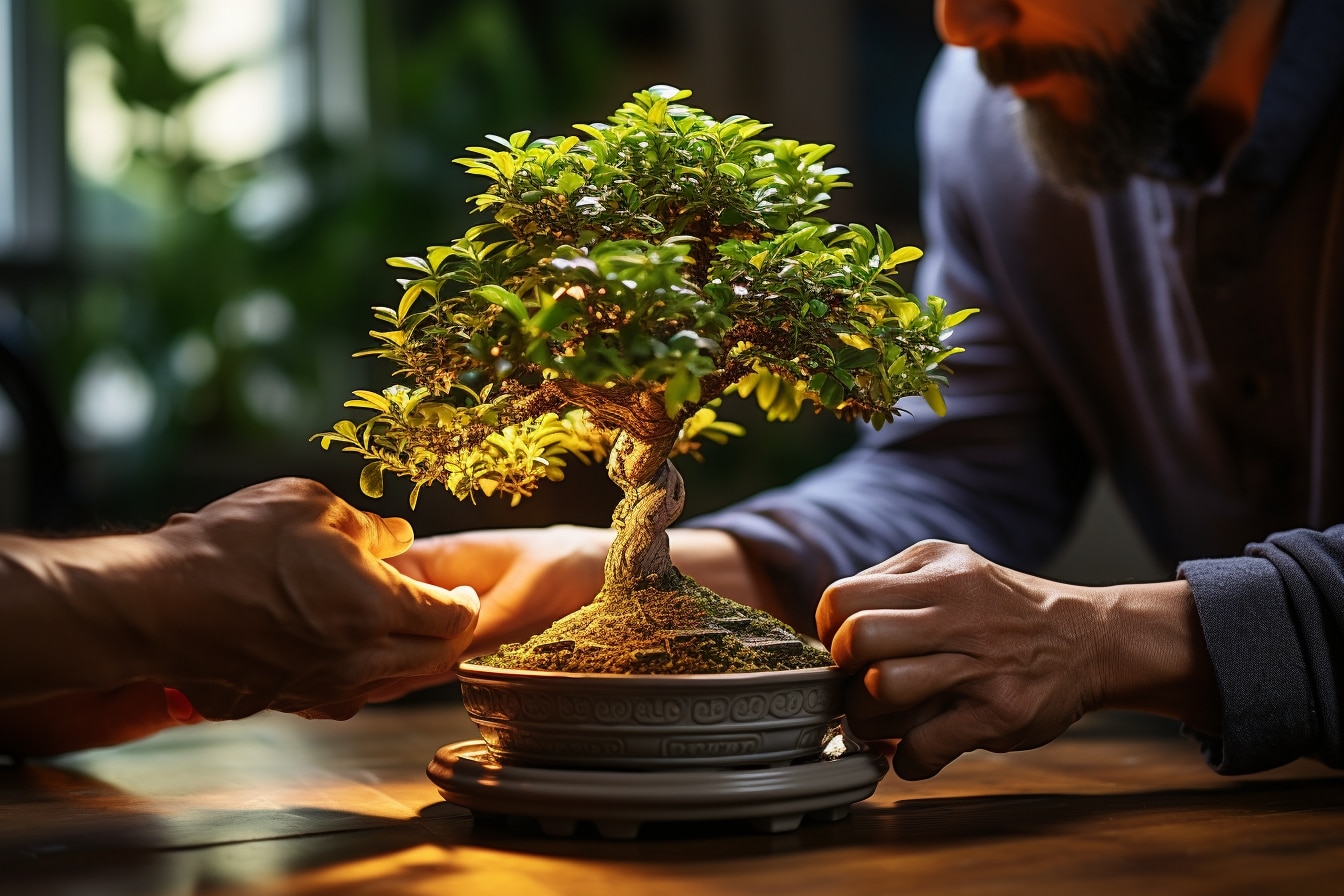Tiny Eden: Mastering the Art of Growing Fruit Bonsai in Your Apartment

Bonsai, these miniature trees that invite contemplation and serenity, have become a true passion for many horticulture enthusiasts. But did you know that it is possible to grow fruit bonsai even in an apartment? And yes, it is entirely possible to vary the pleasures by growing fruit trees in small pots, right in the heart of your home.
Miniature fruit trees: a source of endless wonder
Imagine a lemon tree, an apple tree or even an orange tree, reduced to a miniature size, but nevertheless retaining the beauty and flavor of their fruits. This is all the magic of fruit bonsai in an apartment. These miniature trees, through careful pruning and tying technique, acquire artistic shapes and balanced proportions, while producing delicious fruits. Imagine the pride of tasting a delicious apple from your own miniature apple tree!

The secrets of a successful culture
Growing fruit bonsai in an apartment requires a little know-how and patience, but the results are well worth it. First of all, it is essential to choose varieties of fruit trees adapted to life in pots, such as the dwarf lemon tree, the miniature fig tree or the flowering plum tree. Then, the choice of pot is essential. Opt for a terracotta pot which will allow good aeration of the roots and efficient drainage. Finally, be sure to provide your fruit bonsai with sufficient light, by placing it near a sunny window, and to maintain regular watering, while avoiding excess water.
A pleasure for the senses
Growing fruit bonsai in an apartment is not limited to the simple satisfaction of seeing your trees grow and produce fruit. It’s also a real treat for the senses. The delicate scent of the flowers, the velvety texture of the leaves, the sweetness of ripe fruits… each aspect of this age-old art awakens our senses and immerses us in a unique sensory experience. Imagine yourself enjoying a raspberry, while admiring the fineness of the branches of your raspberry bonsai. It’s a real taste and visual escape in the heart of your own apartment!
A calming and meditative ritual
Growing fruit bonsai in an apartment goes well beyond a simple leisure activity. It is a truly soothing ritual, conducive to meditation and introspection. Caring for these miniature trees takes time, patience and constant attention. But it is precisely in this close relationship between man and nature that all the magic of growing fruit bonsai is found. This deep connection with nature invites us to slow down, refocus and find serenity in our domestic environment. Growing fruit bonsai in an apartment means finding the balance between the excitement of urban life and the rejuvenating calm of nature.
The unsuspected benefits of fruit bonsai in an apartment
Beyond simple aesthetics and passion for horticulture, fruit bonsai offer their growers a range of unsuspected benefits, both physically and emotionally. Although the charm of these miniature trees lies primarily in their visual beauty, their impact goes far beyond mere contemplation.
Cognitive stimulation and creativity
Fruit bonsai trees require ongoing thought and planning. Thinking about what shape the tree should take, what type of fruit it will produce, and how it will be cared for stimulates the brain. This cognitive stimulation is beneficial for mental health, helping to prevent disorders such as dementia. Additionally, creating a unique design for each bonsai allows you to express your creativity, an aspect often overlooked in our busy daily lives.
Therapeutic effects on stress and anxiety
The process of growing and caring for fruit bonsai trees is itself a form of therapy. Paying attention to the growth, size and shape of the tree helps distract the mind from daily worries. Additionally, simply touching the earth and tending to a living plant can have calming effects, reducing stress and anxiety.
Improved indoor air quality
Bonsai, like all plants, help purify the air in our environment. They absorb carbon dioxide and release oxygen, improving the quality of the air we breathe indoors. Additionally, certain fruits, when ripening, can also release pleasant aromas that naturally perfume the environment.
Strengthening the connection with nature
In an increasingly urbanized world, many people feel disconnected from nature. Growing a fruit bonsai in an apartment allows you to renew this link. This offers a unique opportunity to reconnect with the earth and understand natural cycles, even in a small space.
Choosing the best substrate for your fruit bonsai
The choice of substrate is one of the most crucial aspects in growing fruit bonsai, especially in an apartment. Although the choice of tree and pot is essential, the substrate plays an essential role in the growth and health of your small tree. Opting for the right soil mixture not only ensures good root growth but also optimal nutrition for your bonsai.
Understanding Your Bonsai’s Needs
Each species of bonsai has its own substrate needs. Fruit trees, for example, generally need well-draining soil to prevent roots from rotting. Additionally, some trees prefer more acidic soil, while others do better in neutral or slightly alkaline soil.
Opt for a special bonsai mixture
Soil mixes specifically designed for bonsai are generally the best choices. These mixes are designed to provide optimal drainage while retaining enough moisture to nourish the tree. They often contain items such as akadama, pumice and volcanic stone.
The question of fertilization
Even with the best substrate, your fruit bonsai will require regular fertilization. Soil nutrients become depleted over time, and additional supply is needed to ensure healthy growth. Opt for a fertilizer specially formulated for bonsai, respecting the recommended doses. Over-fertilizing could burn the roots of your tree.
Monitoring and readjustment
Over time, your bonsai substrate may become compacted or lose its drainage properties. It is then necessary to transplant your bonsai, generally every 2 to 3 years. This step removes dead roots, aerates the soil and provides a new nutrient-rich substrate.
Comments
Leave a comment